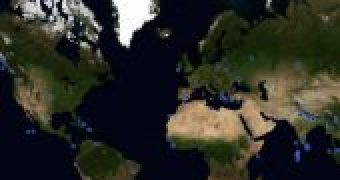Bing Maps is constantly evolving, and the latest collection of updates introduced by Microsoft is designed to enhance the user experience and provide developers with more functionality.
As far as users are concerned, Bing Maps’ sharing capabilities have been improved considerably.
Dan Polivy, senior program manager of Bing Maps, reveals that the latest release comes to enhance the way that maps can be shared via email, mobile devices, GPS, Facebook, Twitter, or by being embedded in third-party websites.
Sharing maps can be done either via the Share button in the upper right hand corner of the map, or through the Send option that is featured under search results.
Polivy highlights the enhancements that the most recent Bing Maps update delivered:
“The URL links are shorter, thanks to our “binged.it” domain. But if you’re more of a traditionalist, just click the “Show full URL” link to see the expanded version.
“You can now easily share your results, directions, places, and more on Facebook and Twitter with one click.
“If you’re in the US, UK, Australia, Canada, France, Germany, or Italy you can send search results and driving directions directly to mobile phones via SMS.”
Microsoft also kicked up a notch Bing Maps’ direction capabilities, simplifying the experience for the end users. Customers can now take advantage of online editing in order to better modify routes without the need to turn to the edit section.
But there are also a number of goodies that developers will undoubtedly welcome. There are also Bing Maps REST web services and the Bing Spatial Data Service updates as well as new features.
The software giant increased the number of properties in the Geocoding results, adding Interpolation, InterpolationOffset, ParcelCentroid, and Rooftop.
Also “by adding an optional parameter includeNeighborhood to a geocoding request it is now possible to return the neighborhood as part of the address,” the company noted.
Static maps rendering enhancements now allow for the limit of pushpins to be increased up to 100, instead of 18, but the HTTP Post will need to be used instead of the Get method.
On top of this, “the Bing Spatial Data Service provides two public data sources with NAVTEQ POI for North America and Europe. The POIs are grouped into categories and can be accessed using the Query API,” the Redmond company added.

 14 DAY TRIAL //
14 DAY TRIAL //